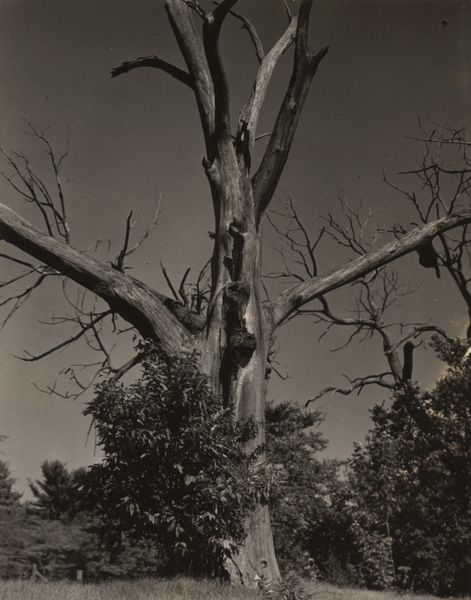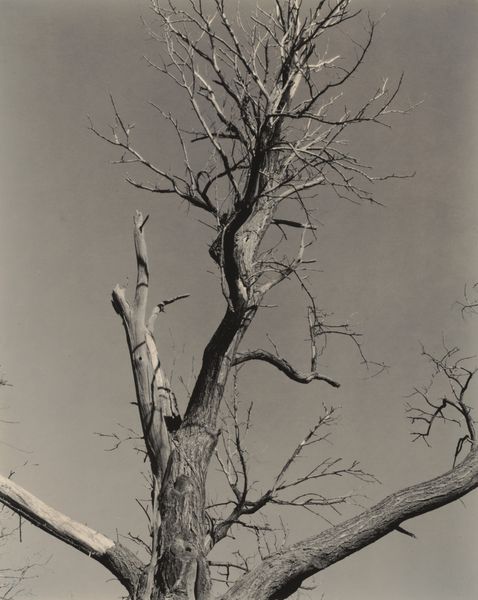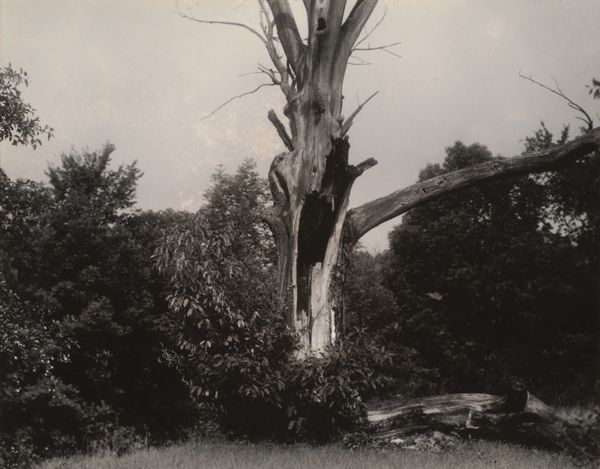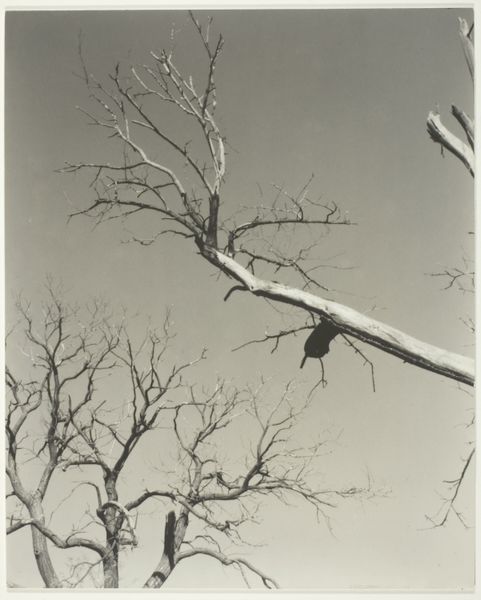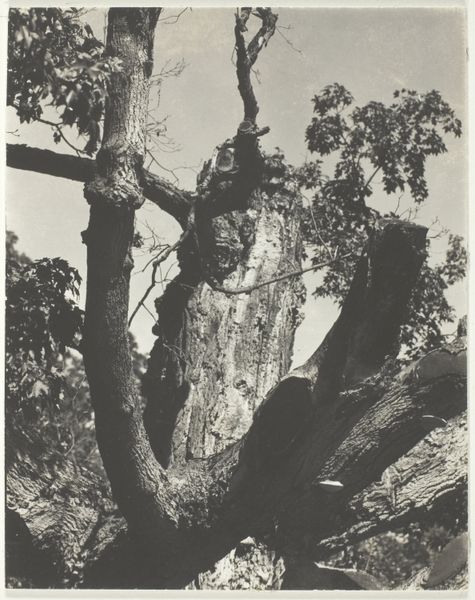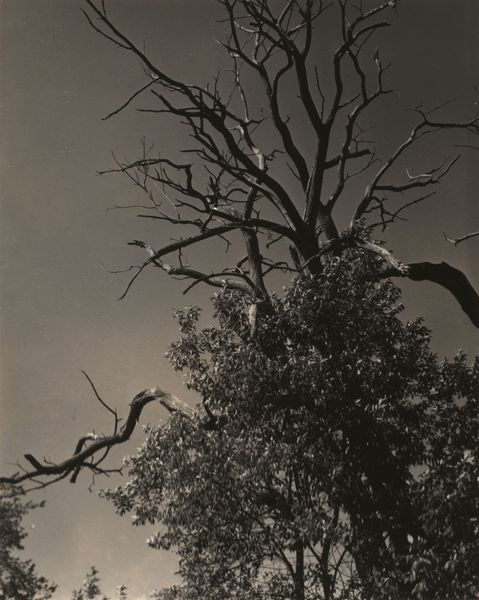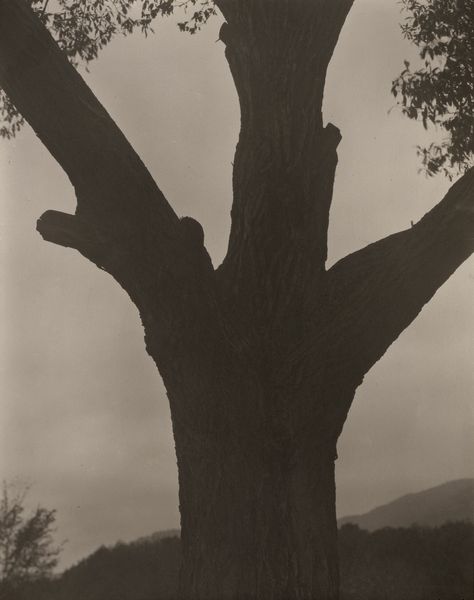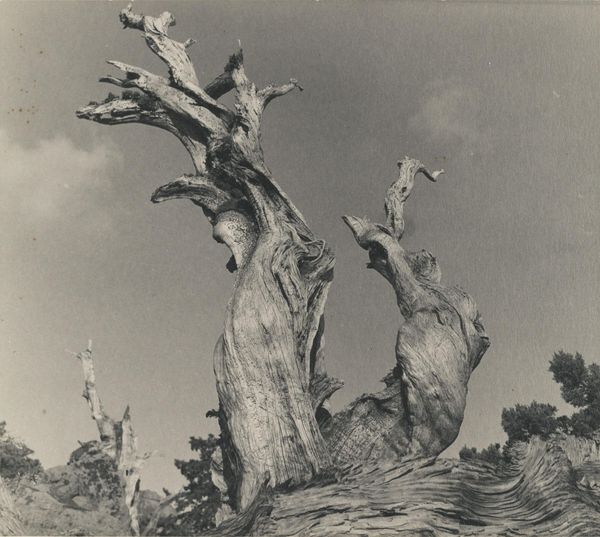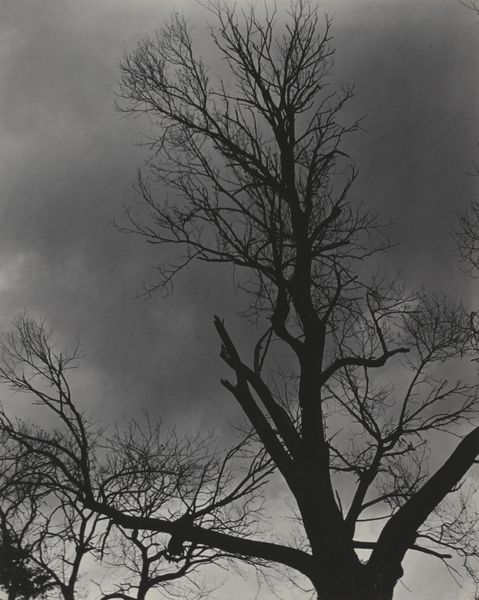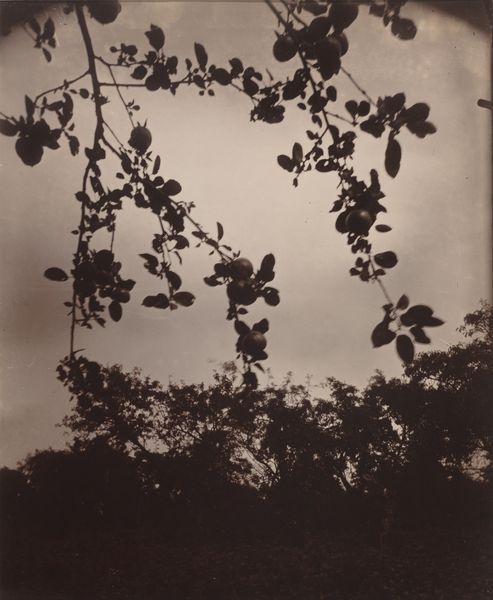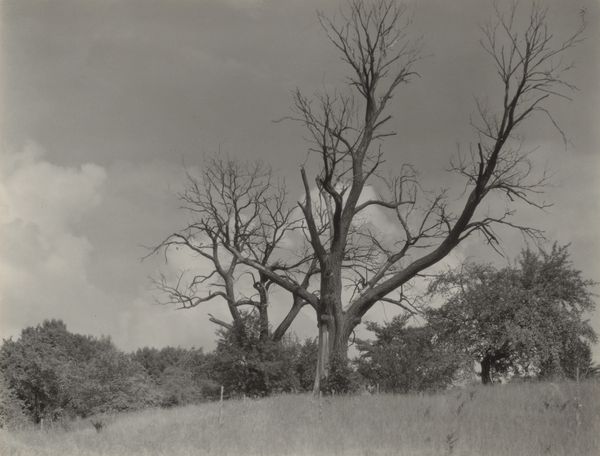
photography, gelatin-silver-print
#
pictorialism
#
landscape
#
photography
#
black and white
#
gelatin-silver-print
#
monochrome photography
#
monochrome
#
monochrome
Dimensions: sheet (trimmed to image): 11.1 × 8.4 cm (4 3/8 × 3 5/16 in.) mount: 31.8 × 25.3 cm (12 1/2 × 9 15/16 in.)
Copyright: National Gallery of Art: CC0 1.0
Curator: This arresting image is "Dead Chestnut Tree," a gelatin-silver print captured around 1937 by Alfred Stieglitz. What do you make of it? Editor: Bleak. The stark, monochrome palette casts an almost ghostly pall over the scene. The skeletal branches reaching into the sky create a strong diagonal dynamic, almost aggressive in its upward thrust. Curator: Stieglitz's pictorialist style lends a soft, almost painterly quality to the starkness. Notice the textures – the smooth sky against the rough bark. This elevates it beyond mere documentation; it's a constructed emotional landscape. Editor: Constructed indeed, and materially achieved through his masterful control of the gelatin-silver process. I see a contrast: an objective record of the tree's state, but presented via meticulous darkroom manipulation. It emphasizes the labor, almost industrial, that converts the organic to an artistic statement. Curator: I'd argue Stieglitz harnesses photography's inherent capacity to index the real world, manipulating its inherent form. Look closely at the positioning of the central tree relative to those around it; note the relationships and tensions formed by line and tone and positive and negative space in relation to the pictorial frame. The materiality exists in service to formal concerns. Editor: Agreed. But let’s not ignore the labor necessary to create such formal relations. Think about sourcing materials and developing this photograph, an active manipulation in a world before digital tools were widely accessible. And consider, too, the wider implications of the chestnut's demise, maybe its connections to resource extraction. Curator: Certainly, the photograph is enmeshed in these systems. Its merit lies in its ability to transcend pure reportage. Stieglitz, through carefully controlled techniques, elicits a powerful and universal statement about loss, not necessarily as historical commentary. Editor: Precisely, the act of photographic construction brings those considerations back in, providing insight into both ecological loss and, the artist’s labor during its execution. It's the process that enables him to reveal this wider significance, not simply aesthetics. Curator: Thank you, these considerations allow us a broader understanding of "Dead Chestnut Tree" within a visual dialogue, where content is elevated by execution to be visually experienced rather than just consumed or received. Editor: Absolutely. Viewing it with those contexts in mind illuminates the labor needed and provides a different, perhaps more informed, perception of the image and its time.
Comments
No comments
Be the first to comment and join the conversation on the ultimate creative platform.

